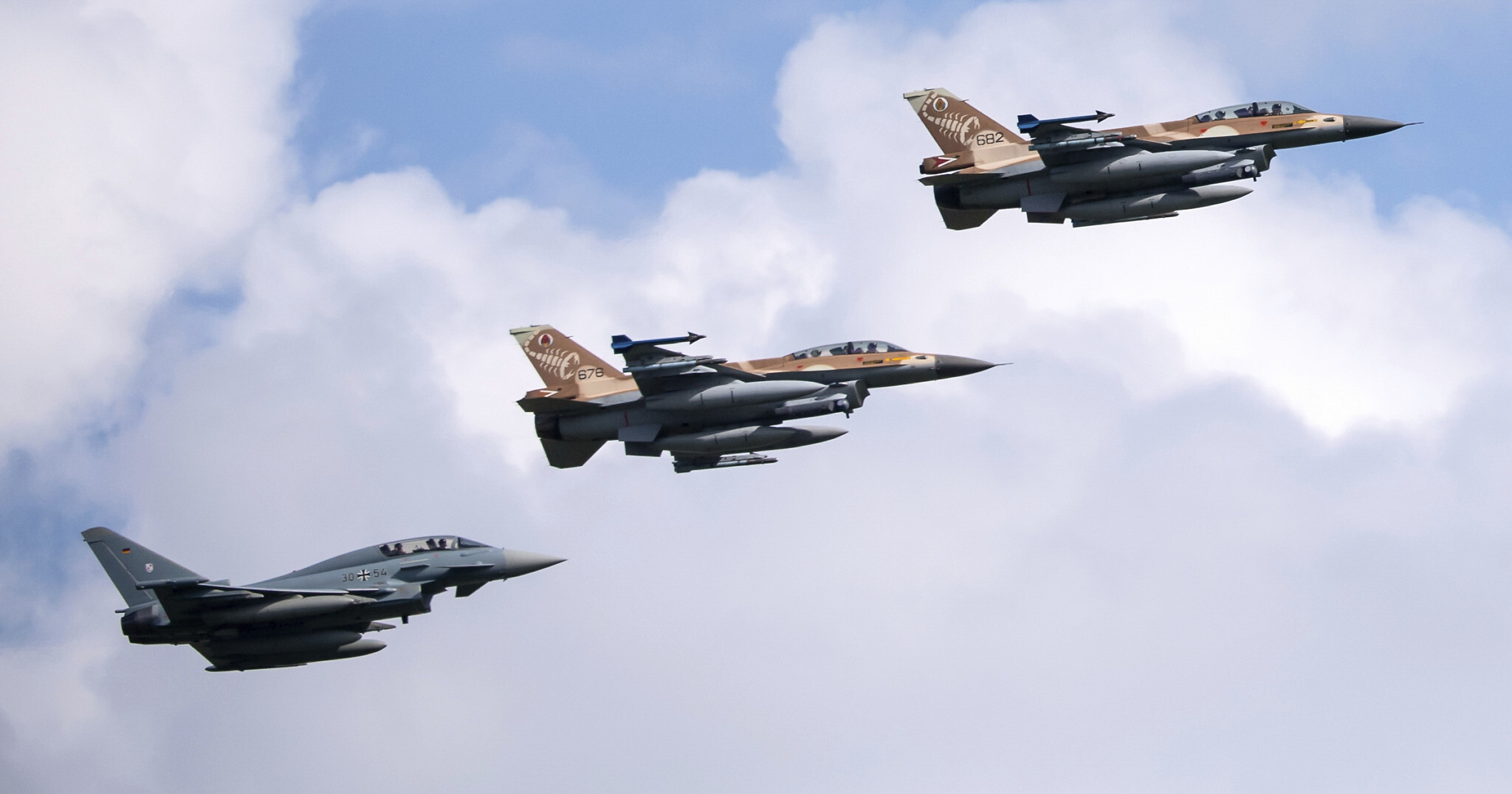Fighter Jet Formation - The Vic formation is a formation designed for military aircraft and was first used during World War I. It has three or sometimes more planes flying in close formation with the leader in the lead and the rest of the plane left and right, all resembling the letter "V". The name of the formation comes from the term used for "V" in the RAF phonetic alphabet.
At the start of World War I, little thought had been given to the most effective formations to use for military aircraft. Groups of airmen, drawn from the armies or navies of the various nations, flew in columns, or in line, forward as if they were troops of cavalry or flotillas of ships. It soon proved ineffective for several reasons. First, leaders and their squads could not communicate with each other except for the vague instruction to follow the leader. Second, if they came under anti-aircraft fire from the ground, the flight would all turn at once, scatter the formation, or follow the leader around a point, such as a horse or ship, that held cohesion but was exposed on fire at some point. point. a fixed point. The solution was to fly in a close V formation, which allowed the aircraft to make a sudden 180 degree turn if fired upon, leaving them flying out of harm's way with the formation intact but with their positions in the formation reversed .
Fighter Jet Formation

The training also allowed the pilots to see and communicate with each other through hand signals and enabled them to stay together in poor visibility or cloud. Later, when bombers and reconnaissance aircraft came under attack from fighter aircraft, the Vic proved to have good defensive qualities. Pilots, looking inward to maintain formation, could neglect each other for attackers, and their spotters/rear gunners could use linked fire to protect each other.
Ai Could Enable 'swarm Warfare' For Tomorrow's Fighter Jets
Vic was the basic flight formation adopted by all major air forces. The French Air Force called it Chevron and the Imperial German Army Air Service called it Kette. It remained the standard formation throughout the interwar period and into World War II.
The basic unit was the triplane section of a Vic. Two sections constituted a squadron and two squadrons constituted a squadron. The squadrons flew in line behind, one Vic behind the other, making the squadron leader the only person to search for the enemy.
At the start of World War II, the Vic was still used by bombers and fighters in most air forces, but Finnish and German Air Force fighter units had switched to the more flexible combination and aggressive pair (Rotte) and four (Schwarm). . They consisted of one pair (leader and winger) and four (two pairs) in a "finger-four" arrangement
Luftwaffe pilots disparaged the RAF's use of the Vic formation during the Battle of Britain, but in practice there was little else Allied pilots could do. Germany, as the aggressor, had a choice of how and what to attack, and based on its experiences during the Spanish Civil War, had changed and developed its tactics accordingly. Fighter Command could only improvise until the battle was over before reviewing and making changes. As an interim method, the RAF used the line formation aft in which quadriplane flights flew behind each other. The Luftwaffe mocked them by calling them Idiotreih ("rows of idiots")
Us, Allies Fly Fighter Jets Amid North Korea Tensions
"We knew there were a lot of issues with our tactics during the Battle of Britain, but it was a crazy time to change everything we were training for. We didn't have time to experiment when we were in battles three and four plus we had new pilots straight out of flight school who were trained - barely - to use the old type of close formation - they wouldn't have any just couldn't cope with something drastically different."[3]
Additionally, Fighter Command's main purpose was to intercept the bombers, who were always flying in the defensive Kette and so the optimal formation to attack them was a matched three-plane Vic so that each fighter ended up in a different bomber.
This was also the conclusion of the Luftwaffe later. Facing the USAAF bombers in their box formations of massed Vics, the German pilots returned to Kette to deal with them.
Some changes were made by the RAF within Vic's structure. Pilots were taught how to operate the formation, and the rearmost Vic in a squadron was assigned to weaving to improve observation, but weaver casualties were still high.
Naval Aviation Brigade Conducts Around The Clock Flight Training
Late in the campaign, Fighter Command experimented with and adopted the pair-and-four arrangement, but they could fly in echelon or rear line for ease of identification. Douglas Bader of 242 Squadron experimented with the four-finger arrangement and found it useful. By 1941 it was in general use with the RAF.
In 1942 came the US Army Air Forces, whose strategy was daylight bombing. Dense bomber formations relying on heavy defensive fire were to win the objective. The most basic formation for bombers was a three-plane "V", referred to as an "element". Stacks of these elements were configured to form a defensive bombardment formation called a "battle box". Battle boxes, involving full squadrons, groups, or bridge wings, could produce enormous firepower and offer mutual support, but casualties remained high without fighter cards.
Fighter jet formation names, latest us fighter jet, jet formation, f 15 fighter jet, fighter jet games, fighter jet toys, fighter jet party supplies, lego fighter jet, the newest fighter jet, fighter jet training, fighter jet canvas, ngad fighter jet

0 Comments